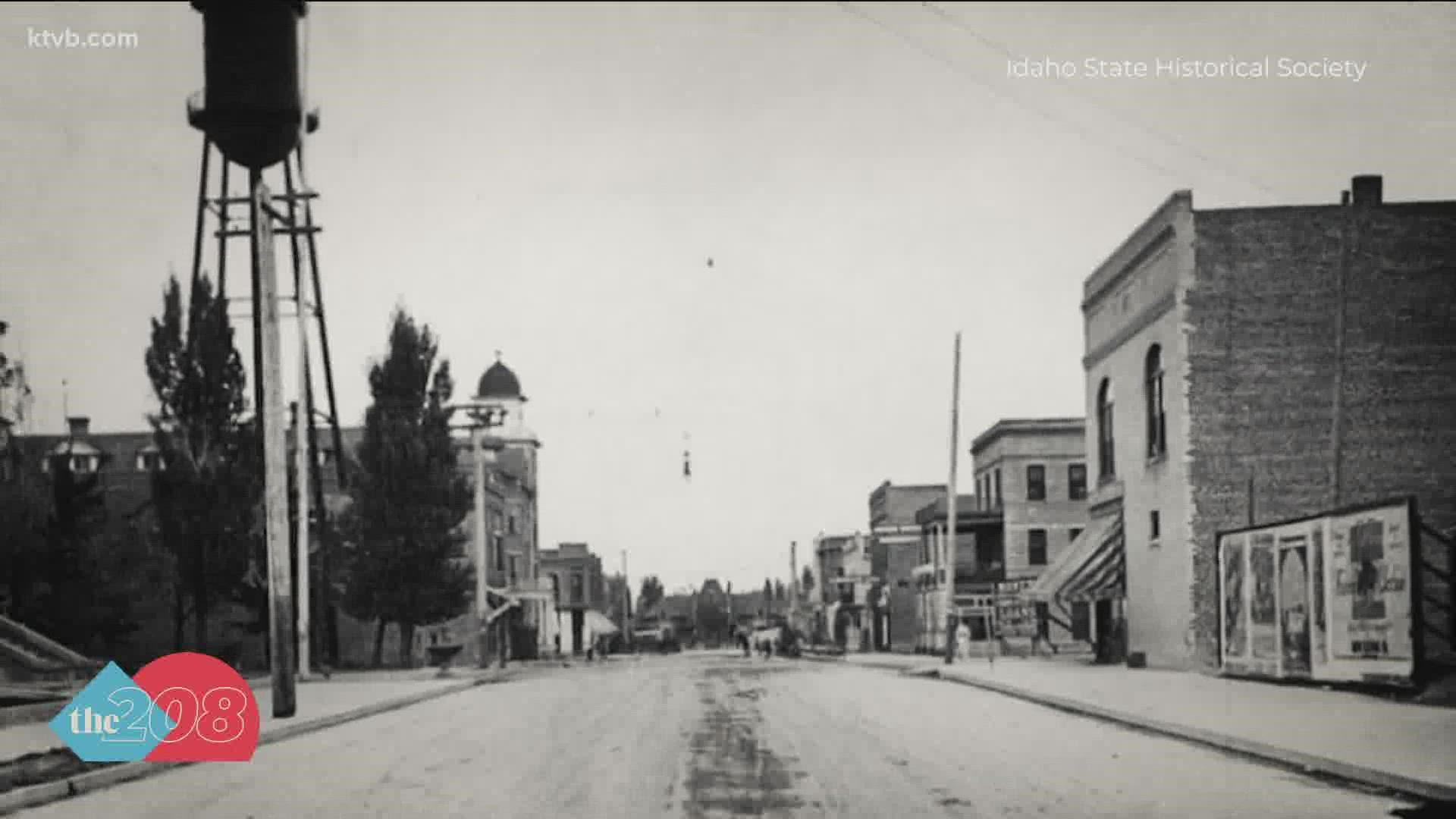NAMPA, Idaho — Thanks to the United State's growing railroad infrastructure and the Homestead Act, the City of Nampa came to be and grew into the largest city in Canyon County.
With Nampa celebrating its 135th birthday, The 208 decided to make a trip down memory lane to find how Nampa came to be.
In the early 1880s, the Oregon Short Line was finished in southwest Idaho, which went from Weiser, through Caldwell, what would become Nampa, to Wyoming.
Three men, James McGee of Caldwell, local businessman Alexander Duffes and James Stewart of Portland, got together and decided that one piece of property near the railroad had potential.
In 1885, under the Homestead Act, Duffes filed a claim to get 160 acres for $1.25 an acre. On Sept. 8, 1886, McGee and Duffes formed the Nampa Land and Improvement Company and filed for incorporation.
Being a religious person, Duffes refused to sell to anyone who wanted to build a saloon, which earned the town the nickname of "New Jerusalem." However, that prohibition wasn't well enforced. Within two years, three of the city's 28 businesses were bar rooms.
As sort of a dismissive to Duffes, when his family moved 21 years later, a brewery was built in its place.
At the time, the Short Line snubbed the City of Boise but the Idaho Central Railway connected the future capital city to Nampa, a junction that would turn Nampa into a growing city.
The City of Nampa wasn't an official entity until April 17, 1891, when the city government was formed. "New Jerusalem" didn't stick as a name for the town. The origins of Nampa were never definitely explained. Some say it was named after a Shoshone-Bannock chief who was called "NAM-puh," which "namb" is also the Bannock word for "footprint."
Join 'The 208' conversation:
- Text us at (208) 321-5614
- E-mail us at the208@ktvb.com
- Join our The 208 Facebook group: https://www.facebook.com/groups/the208KTVB/
- Follow us on Twitter: @the208KTVB or tweet #the208 and #SoIdaho
- Follow us on Instagram: @the208KTVB
- Bookmark our landing page: /the-208
- And we also turn each episode into a podcast on Podbean
- Still reading this list? We're on YouTube, too:

